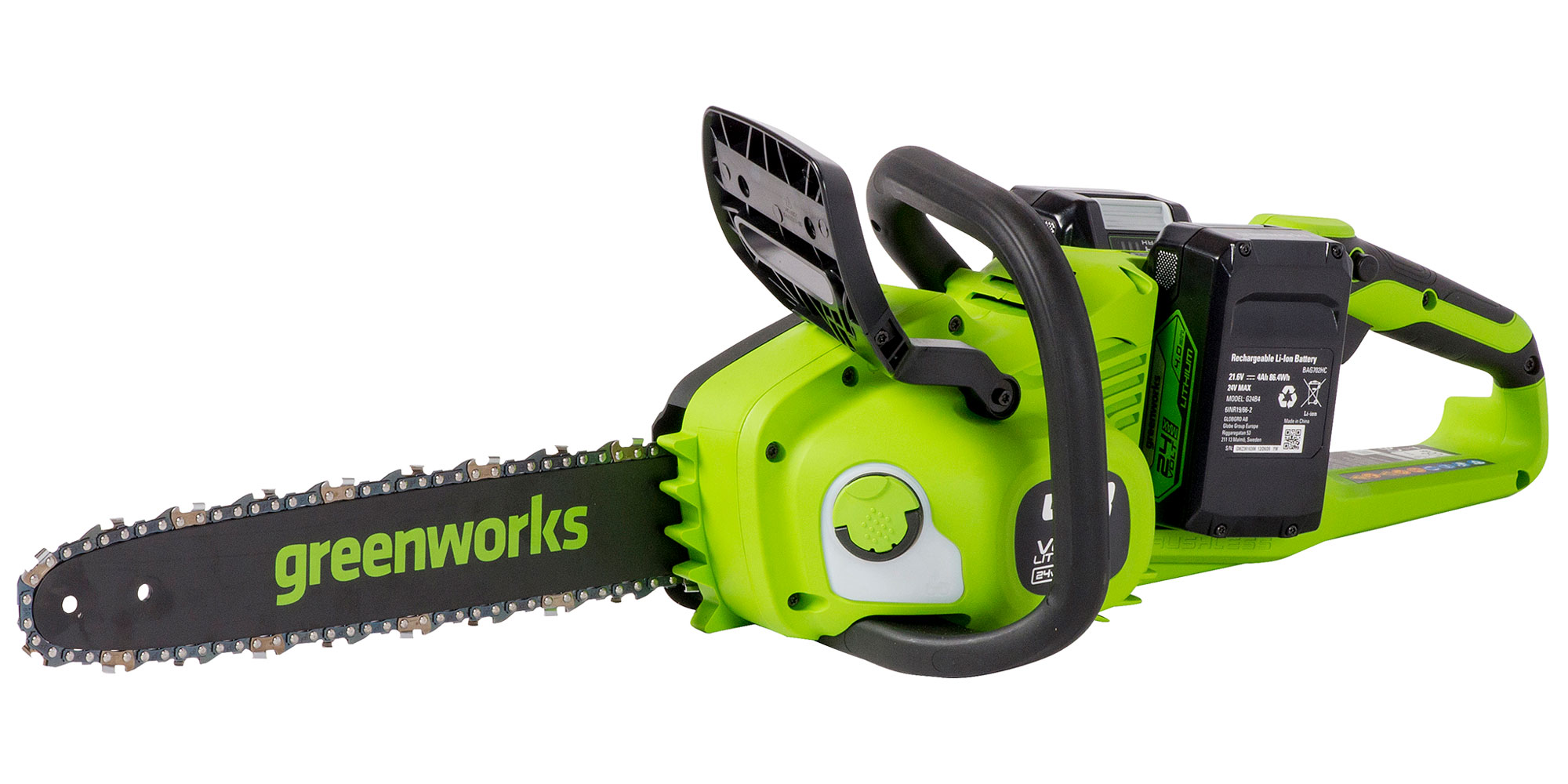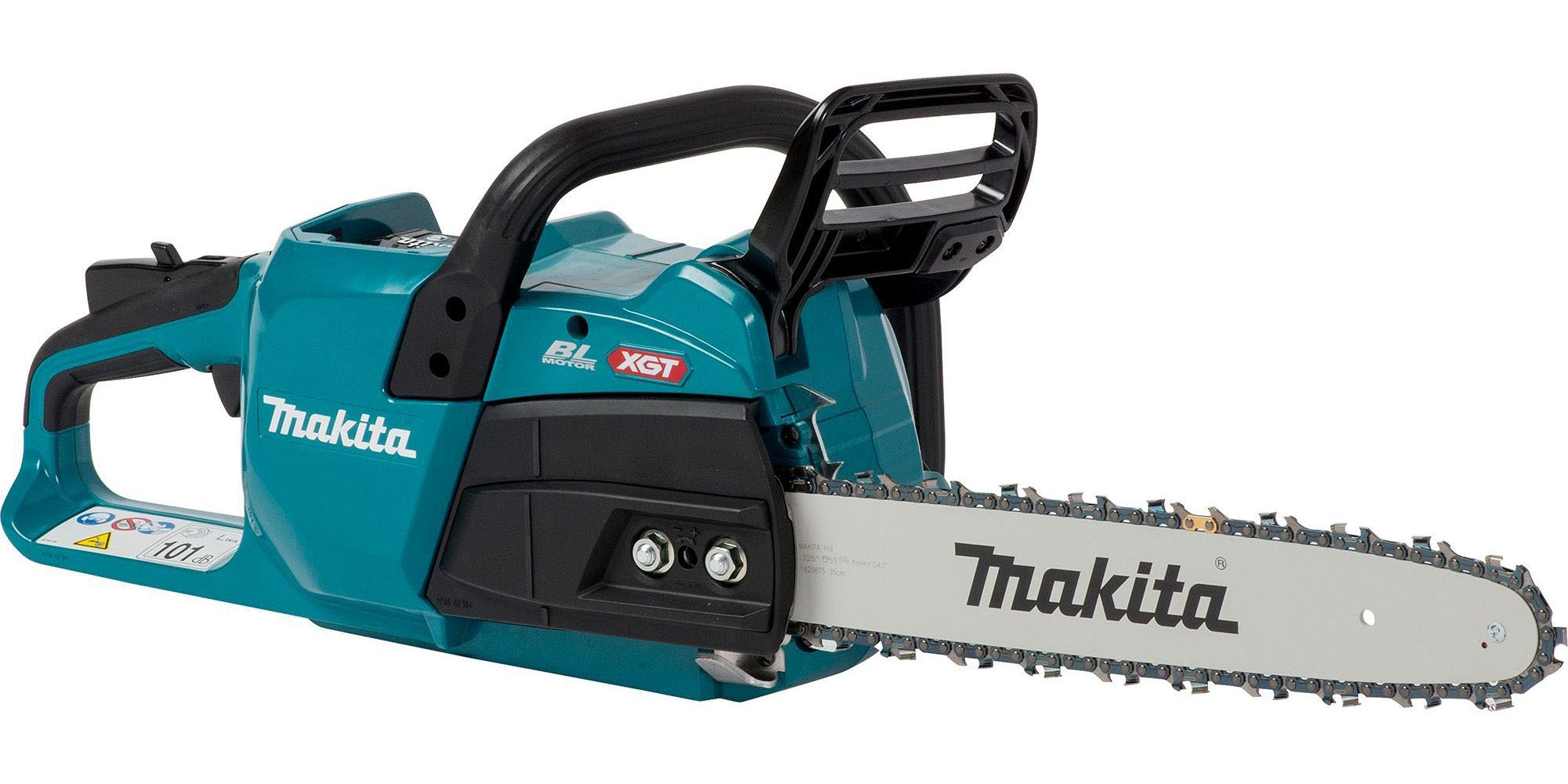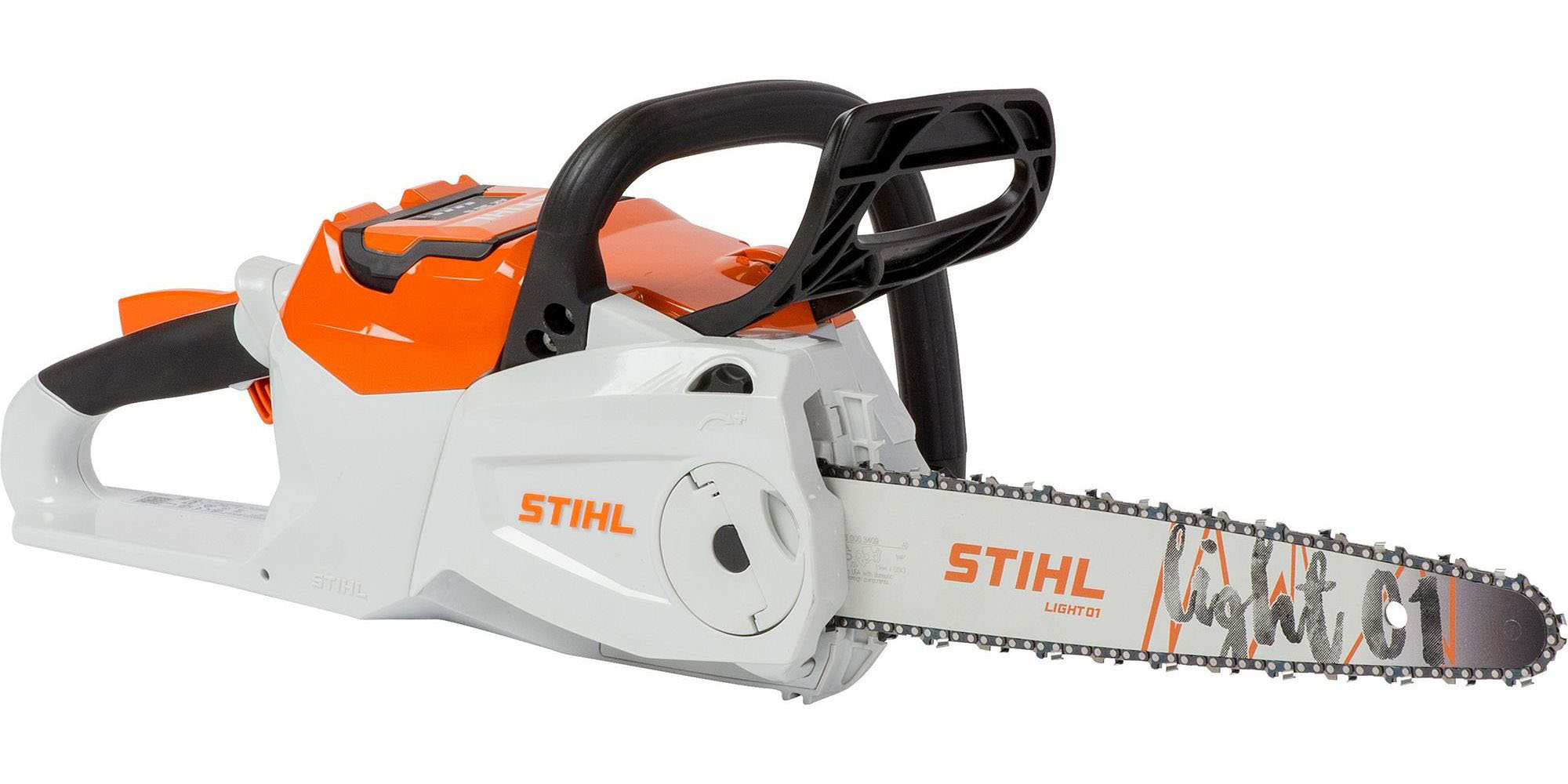
Get a year of super-useful advice
Make your garden better than ever! Get year-round expert tests and advice for only £36.75 - that’s 25% off!
Join Which? GardeningOffer ends 8 January 2026
By clicking a retailer link you consent to third-party cookies that track your onward journey. This enables W? to receive an affiliate commission if you make a purchase, which supports our mission to be the UK's consumer champion.

Some chainsaws are packed with high-spec features, but don't start easily and struggle to slice through hard wood. Others are basic, but start immediately and cut through even the thickest logs easily. That's why we've tested dozens of models to make our recommendations.
Our tests focus on rear-handle chainsaws (also known as ground saws) that allow the user to control the saw far more easily and are much safer than top-handled chainsaws, which are typically for professional use.
We test corded electric and battery-powered chainsaws, and we no longer test petrol chainsaws.
How our tests find you the best
We've tested 20 chainsaws
We assess corded and cordless chainsaws from big brands and at different price points to ensure you find the best value and performance.
Tough branches and logs
We take no prisoners. Each chainsaw is challenged with slicing a variety of hard woods including chestnut, oak and a railway sleeper to see how well they cope.
Speed and quality of cut
You don't want to be using a chainsaw for longer than necessary. We record how long it takes to cut different-sized logs and whether the cuts are clean or jagged.
We also test...
Whether it's easy to start and to handle, if it's straightforward to maintain, whether the battery is replaceable, the quality of instructions, and more.
The biggest brands and the most popular ten chainsaws are listed below.
Only logged-in Which? members can view the chainsaw test results.
Join Which? to get instant access to our test results and Best Buy recommendations.
| Chainsaw | Price | Test score | Power type | Blade length | Cutting branches | Ease of use |
|---|---|---|---|---|---|---|
Sign up to reveal Get instant access to this and all our scores and recommendations Unlock tableDigital £8.99 per month, cancel any time. Already a member? Log in | 85% | Cordless | 35cm | |||
| 80% | Cordless | 40cm | ||||
| 78% | Cordless | 42cm | ||||
| 78% | Cordless | 26cm | ||||
| 75% | Cordless | 35cm | ||||
| 75% | Cordless | 42cm | ||||
| 75% | Cordless | 38cm | ||||
| 73% | Cordless | 42cm | ||||
| 69% | Corded | 46cm | ||||
| 63% | Corded | 35cm |
Sign up to reveal
Get instant access to this and all our scores and recommendations
Unlock tableDigital £8.99 per month, cancel any time.
Already a member? Log in
Dates tested: June 2024, June 2023, August 2022, July 2020 and September 2013. Page last checked: December 2025. We're not able to show every retailer and cheaper prices may be available. We've tested 20 chainsaws in total, but the table displays our top picks only.
All the chainsaws we tested are listed in alphabetical order below.
Only logged-in Which? members can view the best chainsaws from our tests.
Join Which? to get instant access to our test results and Best Buy recommendations below.
Our score and verdict Log in or join Which? to instantly reveal

Power type Corded
Blade length 35cm
Weight 4.2kg
Our score and verdict Log in or join Which? to instantly reveal

Available from Gayways (£229) (Tool only)
Most recently tested June 2023
Power type Cordless
Blade length 42cm
Weight 6.4kg
Our score and verdict Log in or join Which? to instantly reveal

Power type Cordless
Blade length 35cm
Weight 5.7kg
Our score and verdict Log in or join Which? to instantly reveal

Available from World Of Power (£349.78)
Most recently tested June 2025
Power type Cordless
Blade length 42cm
Weight 5kg
Make quick work of reducing garden waste with the best garden shredders from our tough tests
Our score and verdict Log in or join Which? to instantly reveal

Available from: Stiga (£279) (Tool only) (Out of stock)
Most recently tested June 2023
Power type Cordless
Blade length 42cm
Weight 4.6kg
Our score and verdict Log in or join Which? to instantly reveal

Available from Stihl (£364) (Out of stock)
Most recently tested June 2024
Power type Cordless
Blade length 26cm
Weight 4.2kg
Our score and verdict Log in or join Which? to instantly reveal

Most recently tested June 2025
Power type Cordless
Blade length 40cm
Weight 4.6kg
Our score and verdict Log in or join Which? to instantly reveal

Most recently tested September 2013
Power type Cordless
Blade length 35cm
Weight 3.3kg
Our score and verdict Log in or join Which? to instantly reveal

Available from: Screwfix (£59.99)
Most recently tested June 2024
Power type Corded
Blade length 46cm
Weight 5.1kg
Our score and verdict Log in or join Which? to instantly reveal

Most recently tested August 2022
Power type Cordless
Blade length 38cm
Weight 5.7kg
Here’s how the rest of the chainsaws from our tests measured up, listed in alphabetical order.
| Chainsaw | Price | Test score | Power type | Blade length | Cutting branches | Ease of use |
|---|---|---|---|---|---|---|
| AL-KO CS 1825 | SQUIRREL_TEXT_50021614 | Cordless | 24cm | |||
| Bosch EasyChain 18V-15-7 | SQUIRREL_TEXT_50014762 | Cordless | 12cm | |||
| Cobra CS1024V | The Green Reaper (£109.99) | Cordless | 31cm | |||
| Ego CS1800E | Gayways (£229) (Tool only) | Cordless | 44cm | |||
| Einhell GE-LC 18/25-1 Li Kit | SQUIRREL_TEXT_50014761 | Cordless | 24cm | |||
| Greenworks G40CS30 | SQUIRREL_TEXT_50019416 | Cordless | 31cm | |||
| Hyundai HY2190 | SQUIRREL_TEXT_50001323 | Cordless | 31cm | |||
| Hyundai HYC40LI | SQUIRREL_TEXT_12877082 | Cordless | 35cm | |||
| McGregor 40cm Electric Chainsaw | Argos (£80) | Corded | 46cm | |||
| Ryobi RY18CS20A | SQUIRREL_TEXT_50021616 | Cordless | 18cm |
Dates tested: June 2025, June 2024, June 2023, August 2022, July 2020 and September 2013. Page last checked: December 2025. We're not able to show every retailer and cheaper prices may be available.

Make your garden better than ever! Get year-round expert tests and advice for only £36.75 - that’s 25% off!
Join Which? GardeningOffer ends 8 January 2026

We regularly revisit the chainsaws on sale to see if there are any more popular brands that need testing and when we find them we do.
Find out more about how Which? is not influenced by product manufacturers or retailers and how your support helps us to stay editorially independent

Cordless chainsaws are ideal if you want to work among branches, as they don't have a trailing cable and are generally quite light and compact. They're less tiring to use and easier to manoeuvre than other chainsaw types. Before you buy, check the model you're considering has enough battery power and will run for long enough for your jobs.
Chainsaw batteries are powerful and can take a while to charge; between 30 minutes to over two hours is normal. They are quite expensive and often cost almost as much as the body of the machine itself. However a lot of manufacturers including Stihl, Ryobi, Bosch and Makita have batteries that can be used with other garden tools from that brand so, if you keep to one brand, you'll only have to buy one battery for most of your garden tools. If you use your cordless chainsaw a lot, it might be worth buying a second battery so that you don't have to stop working while it charges.
The chain needs lubricating with specialist oil to ensure it runs smoothly and doesn’t snag. Look for a chainsaw with an integrated oil chamber that supplies this oil automatically, as this will save you time and hassle; most models come with these as standard, but it’s worth checking before you buy.
Corded electric chainsaws are mains-powered and come with a power cable attached. They are the cheapest models you can buy and ideal if you’re sawing logs or pruning close to the house and can plug the cable straight into a mains socket. Often the power cable is quite short, so if you're chopping logs at the end of your garden you may need to use an outdoor extension cable and residual current device (RCD), which cuts off the power if the cable is cut.
An electric-powered motor drives a metal chain, with lots of cutting teeth, at high speed around an oblong-shaped guide bar. As the spinning chain makes contact with a log or tree trunk, its teeth are dragged along the surface, cutting the wood. The circular motion of the chain keeps the bottom teeth in contact with the wood, so the saw keeps slicing until it has cut all the way through or the power is stopped. The motor doesn't need maintenance in the same way as a petrol engine, but this does mean that if it fails, there is less chance of a simple repair.
Similar to cordless models, the chainsaw chain needs lubricating with specialist oil , so look for a chainsaw with an integrated oil chamber.
A petrol chainsaw will cut through large logs faster than any other type of chainsaw and you can use it anywhere without the hassle of a trailing power cable, so it could be handy if you have a lot of logs to cut or heavy pruning to tackle in the garden.
However, we no longer test petrol chainsaws. Due to recent market shifts, we're seeing fewer launches of petrol-powered gardening tools, as manufacturers appear to be focusing their attention on cordless tools. These offer a better alternative for the environment and our health, as they’re quieter and produce zero emissions, while still being flexible and powerful enough to rival petrol tools.

Chainsaw kickback is where the guide bar gets thrown upwards and backwards towards the user at high speed and is the most common cause of serious chainsaw accidents. It can happen if the log you’re cutting shifts and pinches the tip of the guide bar, or if the tip of the guide bar and chain accidentally comes into contact with another branch, log or hard object.
The chain brake, which is positioned in front of the right hand, is designed to stop the chain dead if it’s automatically activated, to protect against kickback.
Kickback can happen to even the most experienced chainsaw operators, which is why it’s essential to wear the proper safety kit.
When using a chainsaw you should wear a safety helmet, ear defenders, chainsaw trousers, chainsaw gloves and safety boots.
In the EU, all items of clothing containing chainsaw-protective fabric carry a special chainsaw logo and will give the class of protection the clothing gives you. The class tells you the maximum chain speed the fabric is designed to stop.